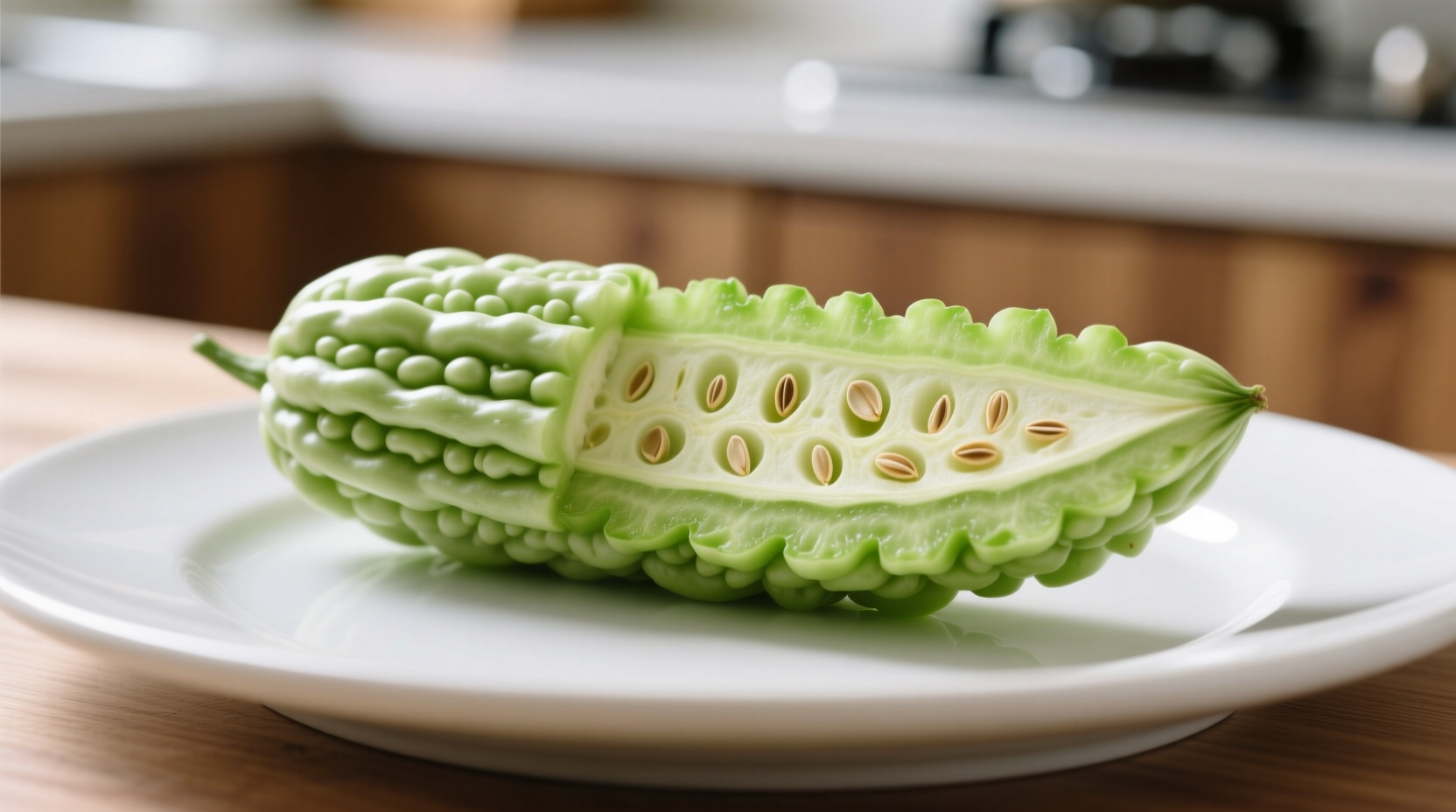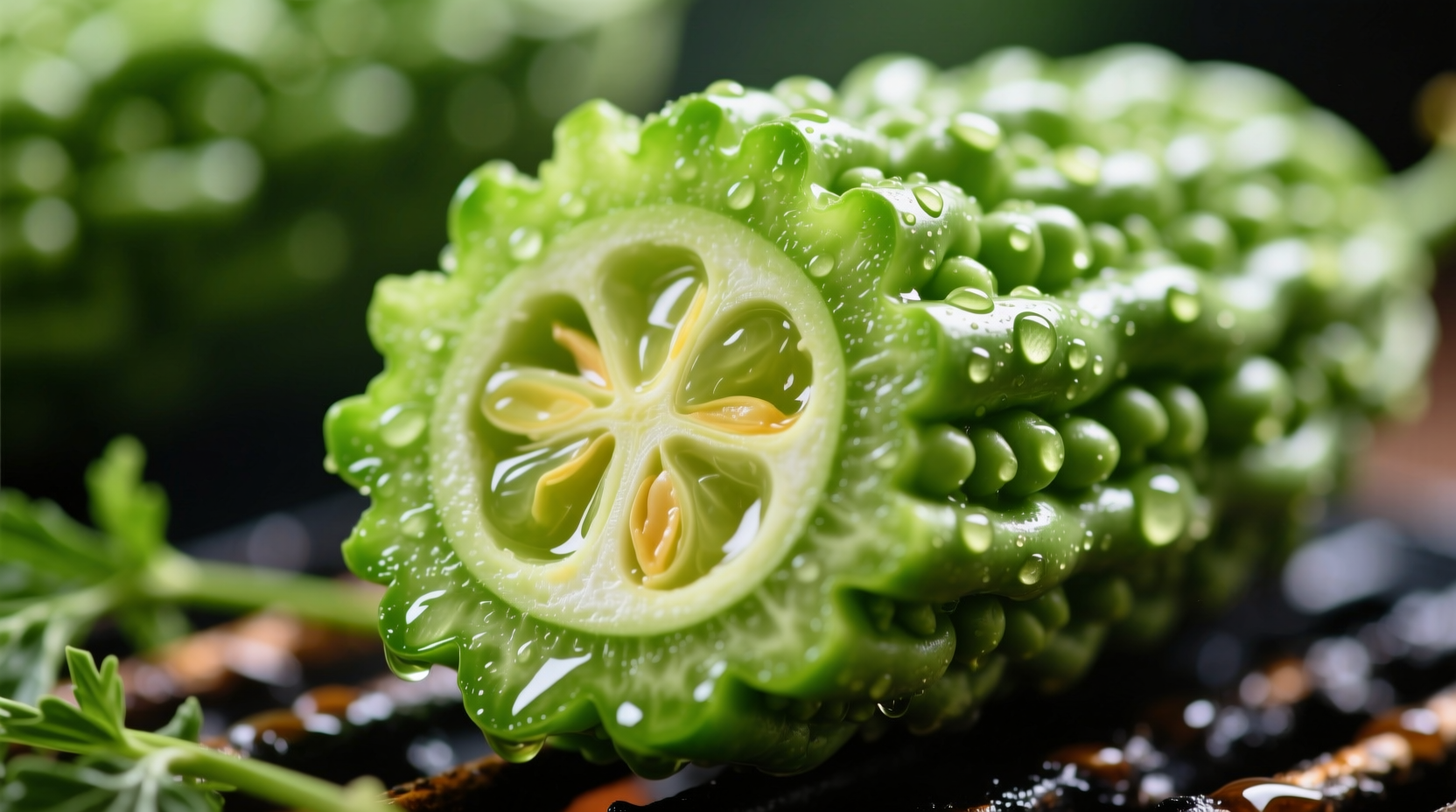If you've ever wondered what does bitter melon taste like before trying this unique vegetable, you're not alone. Many home cooks hesitate to experiment with bitter melon due to its reputation for intense bitterness. This comprehensive guide breaks down exactly what to expect from its flavor profile, how different preparation methods affect its taste, and practical techniques to make it more approachable for your palate.
Understanding bitter melon's distinctive taste characteristics helps you decide whether it's right for your cooking needs and how to prepare it to suit your taste preferences. Whether you're exploring Asian cuisine, seeking health benefits, or simply curious about this unusual vegetable, this guide provides the practical knowledge you need.
The Core Flavor Profile of Bitter Melon
Bitter melon earns its name honestly—the primary taste sensation is unmistakable bitterness. This bitterness comes from compounds called cucurbitacins, which serve as natural defense mechanisms for the plant. Unlike the subtle bitterness found in foods like arugula or radicchio, bitter melon's bitterness is pronounced and can be overwhelming for those unaccustomed to it.
When you take your first bite of raw bitter melon, you'll experience:
- An immediate sharp, bitter sensation that hits the back of your tongue
- Grassy, vegetal undertones reminiscent of cucumber with chlorophyll notes
- A slight metallic quality in some varieties
- A subtle sweet aftertaste that emerges after the initial bitterness subsides
As bitter melon ripens and turns from green to yellow-orange, its bitterness decreases while sweetness increases. Fully ripe bitter melon develops a sweeter profile with jelly-like seeds that have a mild sweetness similar to tomato seeds.
| Food Item | Bitterness Level (1-10) | Similar Flavor Notes | h>
|---|---|---|
| Raw Bitter Melon | 8-9 | Strong coffee, dark chocolate (85%+), dandelion greens |
| Blanched Bitter Melon | 5-6 | Endive, radicchio, steamed kale |
| Ripe Bitter Melon | 3-4 | Cucumber, zucchini, mild bell pepper |
| Common Cucumber | 1 | Nearly neutral, slightly sweet |
How Preparation Methods Transform the Taste
One of the most valuable aspects of understanding what does bitter melon taste like is recognizing how preparation techniques can dramatically alter its flavor profile. Unlike many vegetables, bitter melon's taste is highly responsive to different cooking methods.
The Salting Technique: Reducing Bitterness by 40-60%
The most effective method for reducing bitterness involves salting:
- Slice bitter melon lengthwise and remove seeds
- Cut into thin slices or half-moons
- Sprinkle generously with salt (about 1 teaspoon per medium melon)
- Let sit for 20-30 minutes until liquid draws out
- Rinse thoroughly and pat dry before cooking
According to research from the USDA Agricultural Research Service, this process removes water-soluble bitter compounds through osmosis, significantly mellowing the flavor while preserving nutritional benefits.
Cultural Preparation Differences
Different culinary traditions approach bitter melon's bitterness in distinctive ways:
- Chinese cuisine: Often stir-fried quickly with garlic and black bean sauce to balance bitterness
- Indian cooking: Typically prepared with spices like turmeric, cumin, and amchur (dried mango powder) to counter bitterness
- Thai preparations: Frequently stuffed with meat or tofu mixtures to create flavor contrast
- Filipino dishes: Commonly paired with shrimp or pork in savory soups like sinigang

When Bitterness Is Actually Desirable
While many seek to reduce bitter melon's bitterness, traditional medicine systems like Traditional Chinese Medicine and Ayurveda actually value this quality. The bitterness stimulates digestive enzymes and supports liver function. In culinary contexts, the bitterness provides a counterpoint that enhances overall flavor complexity when properly balanced.
Professional chefs often explain that what does bitter melon taste like depends on context: bitterness that seems overwhelming on its own becomes pleasantly complex when balanced with complementary flavors. Think of it like espresso—intensely bitter by itself but wonderfully nuanced when paired with milk or sweet elements.
Practical Tips for First-Time Tasters
If you're new to bitter melon, follow these steps for the best experience:
Start with Less Bitter Varieties
Not all bitter melons are equally bitter. Look for:
- Indian variety: Smaller, smoother skin, more pronounced ridges, moderately bitter
- Chinese variety: Larger, bumpy but less ridged, generally milder bitterness
- Japanese variety: Long and slender with lighter bitterness
Pairing Strategies That Work
Certain flavor combinations naturally counteract bitter melon's intensity:
- Sweet elements: Tomatoes, bell peppers, or a touch of sugar
- Rich components: Eggs, coconut milk, or ground meat
- Acidic ingredients: Tamarind, lime juice, or vinegar
- Aromatic spices: Garlic, ginger, and black pepper
Your First Bitter Melon Recipe
Try this approachable preparation method:
- Prepare bitter melon using the salting technique described earlier
- Stir-fry with garlic, sliced onions, and tomatoes
- Add one beaten egg and scramble with the vegetables
- Finish with a splash of soy sauce and a pinch of sugar
This simple bitter melon and egg stir-fry introduces the vegetable's unique flavor in a balanced, approachable way that even bitter-food skeptics often enjoy.
Understanding Bitter Melon's Flavor Evolution
Bitter melon's taste changes significantly throughout its growth cycle. According to horticultural research from USDA's National Agricultural Library, the bitterness compounds peak when the melon is young and vibrant green, then gradually decrease as it matures.
The optimal harvesting window for culinary use typically falls when the melon is still predominantly green but beginning to show slight yellowing at the blossom end. At this stage, the vegetable maintains its characteristic bitterness while developing subtle sweet notes that balance the overall flavor profile.
When Bitter Melon Might Not Be Right for You
While many learn to appreciate bitter melon's distinctive taste, it may not suit everyone. Consider these factors:
- If you strongly dislike bitter foods like black coffee or dark chocolate
- When cooking for children who typically reject bitter flavors
- If you're sensitive to bitter compounds due to genetic factors (about 25% of people are "supertasters" with heightened bitter sensitivity)
Remember that preparation makes all the difference—what seems unpalatable raw often becomes enjoyable when properly prepared using traditional techniques.
Frequently Asked Questions
Does cooking bitter melon reduce its bitterness?
Yes, cooking significantly reduces bitter melon's bitterness. Blanching for 2-3 minutes in boiling water removes about 30-40% of bitter compounds, while the salting technique described in this article can reduce bitterness by 40-60%. Stir-frying with complementary flavors further balances the remaining bitterness.
Why does bitter melon taste bitter?
Bitter melon contains natural compounds called cucurbitacins that create its characteristic bitterness. These compounds serve as the plant's defense mechanism against pests. The bitterness intensity varies based on variety, growing conditions, ripeness, and preparation methods.
How does bitter melon compare to cucumber in taste?
While both belong to the same plant family, bitter melon is significantly more bitter than cucumber. Raw bitter melon registers 8-9 on a bitterness scale, while cucumber is only about 1. Bitter melon has grassy, vegetal notes with a pronounced bitter finish, whereas cucumber has a mild, slightly sweet flavor with high water content and no bitterness.
Can you eat bitter melon raw?
Yes, bitter melon can be eaten raw, but its intense bitterness makes this challenging for most people. Raw consumption is common in some traditional medicine practices. If trying raw, select less bitter varieties, remove seeds and white pith, and consider pairing with strong flavors like citrus dressing or spicy chili to balance the bitterness.
Does bitter melon get less bitter when cooked longer?
Not necessarily. Overcooking bitter melon can actually intensify bitterness by breaking down cell structures and releasing more bitter compounds. The most effective bitterness reduction comes from pre-treatment methods like salting or blanching before cooking, not extended cooking time. Quick cooking methods like stir-frying preserve texture while balancing flavor.











 浙公网安备
33010002000092号
浙公网安备
33010002000092号 浙B2-20120091-4
浙B2-20120091-4